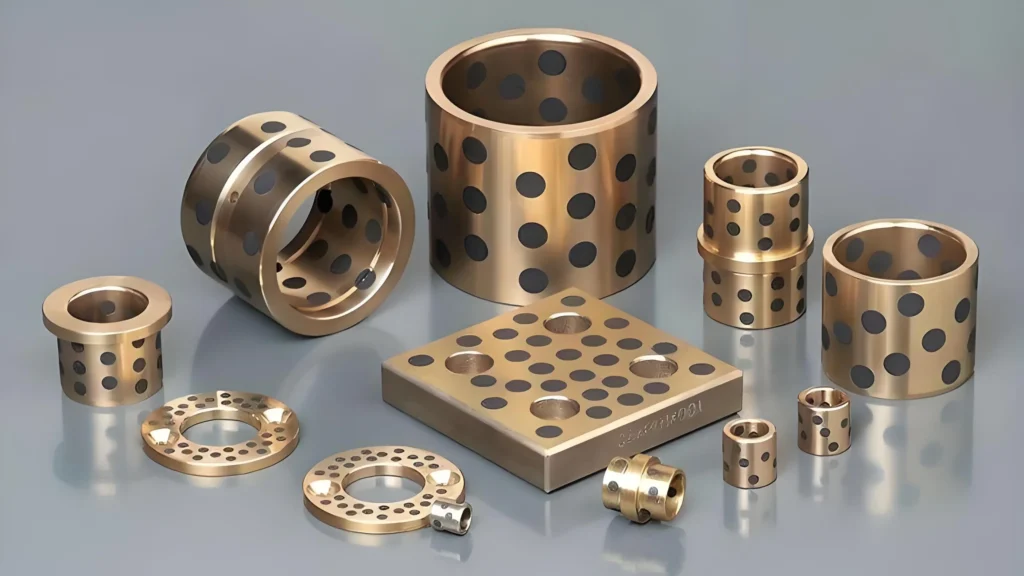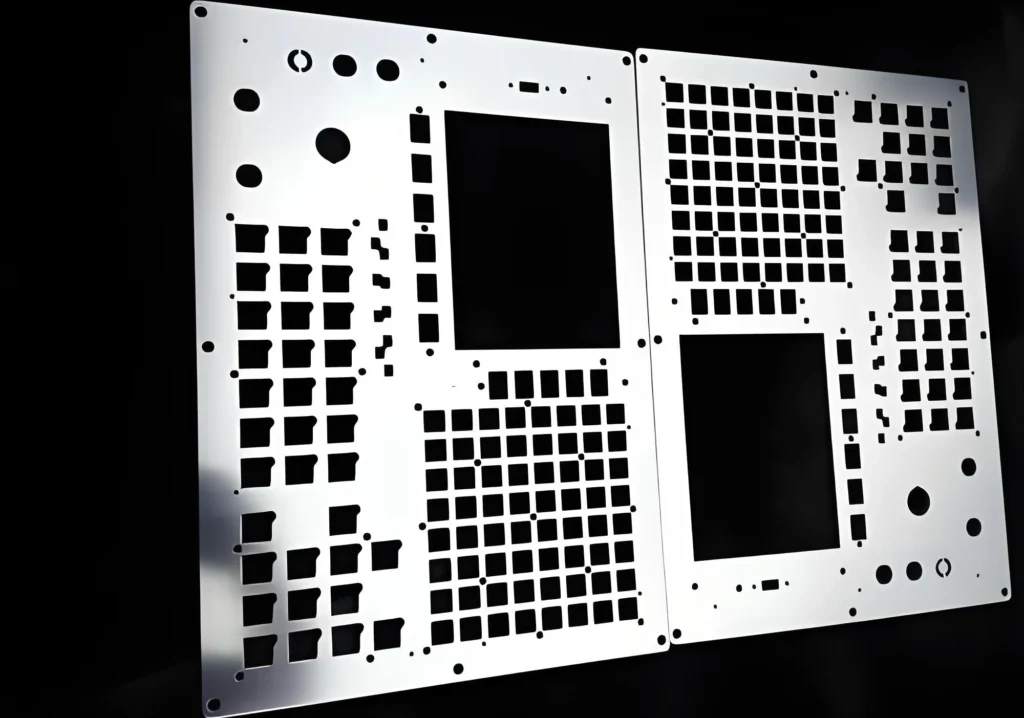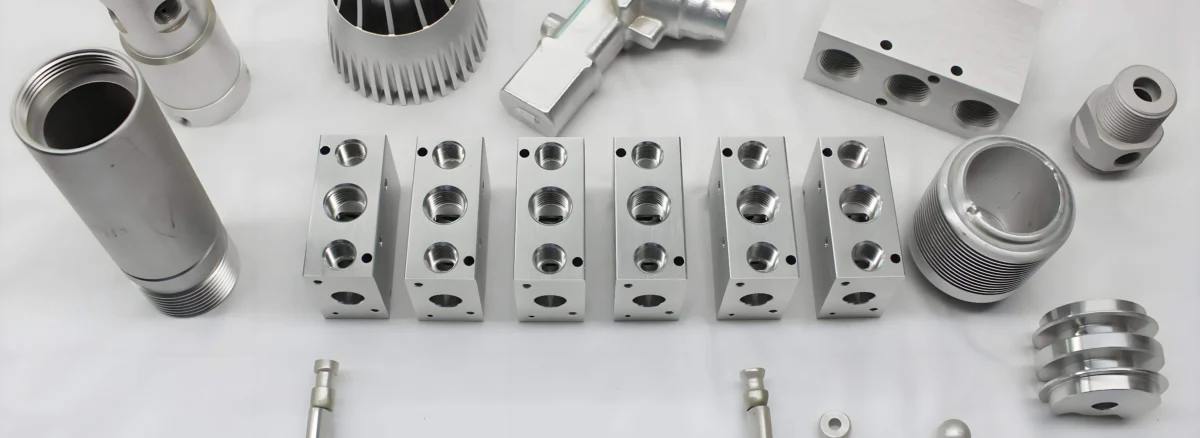This article will provide you with a detailed explanation of what anodized aluminum is, its advantages, how the anodization process works, different types of anodization, and help you select the anodized aluminum process that suits you best. Hopefully, it will be helpful to you.
What is Aluminum Anodization?
Anodizing is a common surface treatment process applicable to various metal materials, with aluminum being the most commonly used. Aluminum anodization involves placing aluminum products into an acidic electrolyte solution, passing an electric current through them, causing the aluminum parts to undergo an oxidation reaction with the electrolyte, forming an aluminum oxide layer that firmly adheres to the surface of the aluminum.
The aluminum oxide layer formed through anodization is more resistant to detachment compared to naturally formed oxide layers. It also exhibits higher hardness, wear resistance, and corrosion resistance.
Why Use Anodized Aluminum?
Corrosion Resistance
The primary reason for anodizing aluminum components is to enhance their corrosion resistance. If the aluminum parts you’re using will be exposed to outdoor environments, seawater, or extreme conditions for extended periods, improving their corrosion resistance is crucial. Anodization serves as an excellent choice for this purpose.
Wear Resistance
Aluminum is a relatively soft metal and prone to wear. However, anodization can increase aluminum’s wear resistance, making it less susceptible to abrasion and extending its lifespan.
Aesthetic Appeal
If you need aluminum products for decorative purposes, anodization is also an option. Anodization can produce aluminum components with a wide range of colors, enhancing their surface quality and decorative appeal, making them more visually pleasing.
Insulation
If you’re using aluminum materials for electronic products or electrical equipment where aluminum’s conductivity is not needed, anodization can improve the insulation of aluminum metal, reducing issues associated with conductivity.


How to Anodize Aluminum
Next, let’s walk through the step-by-step process of anodizing aluminum, along with the materials and precautions required.
Materials and Equipment Needed
1. Aluminum Products: Aluminum products to be treated, such as aluminum alloy sheets, profiles, or parts. These are the main components and cannot be omitted.
2. Electrolytic Tank: A container for holding electrolyte and aluminum products. Its size depends on the size of the aluminum products.
3. Electrolyte: The electrolyte required for anodization, typically including sulfuric acid, oxalic acid, chromic acid, phosphoric acid, etc.
4. Power Supply Equipment: Provides current to promote the oxidation reaction on the surface of aluminum products.
5. Cathode Material: Necessary to complete the electrolysis system with the aluminum products acting as the anode, usually lead or stainless steel.
Steps of Anodizing
1. Preparation: Clean the surface of aluminum products from oil stains, dirt, and naturally formed oxides. Then prepare the required materials and equipment.
2. Placing Aluminum Products: Place the aluminum products into the electrolytic tank, ensuring that they are completely submerged in the electrolyte.
3. Initiating Electrolysis: Heat the electrolyte to the appropriate temperature, then turn on the power supply to allow the aluminum products to act as the anode, applying direct current to initiate the oxidation reaction.
4. Controlling Time and Voltage: During electrolysis, monitor the time and voltage closely to control the thickness and quality of the aluminum oxide layer.
5. Cleaning and Post-treatment: After anodization is complete, remove the aluminum parts from the electrolytic tank and clean them to remove residual electrolyte. Subsequently, perform post-treatments such as sealing holes, dyeing, etc., according to your requirements.
6. Quality Inspection and Packaging: This step involves inspecting the quality of the aluminum parts to ensure they meet your requirements. If everything is satisfactory, they can be used or packaged for shipment.
Precautions
1. Safety Operation: During anodization, corrosive liquids and electricity are involved, so it’s essential to wear protective gear to prevent splashing of corrosive liquids or electrical shocks.
2. Bubble Prevention: During oxidation, bubbles inevitably form on the surface of aluminum parts, affecting the quality of oxidation. You can eliminate bubbles through agitation or other methods.
3. Waste Liquid Treatment: After anodization is complete, proper treatment of waste liquid is necessary to avoid environmental damage.
How to Determine if Aluminum Has Been Anodized
1. Visual Inspection: The surface of anodized aluminum parts appears uniformly colored, typically silver-white or deep gray. If the coloration is uneven or mottled, it’s likely that the aluminum has not been anodized.
2. Hardness Test: You can scratch the metal surface with a sharp object. Anodized aluminum exhibits higher surface hardness compared to untreated aluminum, making it more resistant to scratching.
3. Conductivity Test: Conductivity testing can be done using a standard voltmeter. Anodized aluminum typically has lower conductivity compared to untreated aluminum.
4. Oxide Layer: Anodization results in the formation of an oxide layer on the surface of aluminum, typically with a thickness ranging from 5 to 25 micrometers, and the thickness is relatively uniform across the surface. This is also a method for identification.
Different Types of Anodized Aluminum Processes
Anodized aluminum processes can generally be divided into four different types, each with its own advantages. Let’s delve into each of these four processes:
Sulfuric Acid Anodizing
Sulfuric acid anodizing involves using sulfuric acid or aluminum sulfate as the electrolyte to generate an oxide film with a thickness of approximately 5 to 25 micrometers. This process is the most widely used due to its simplicity and low cost. However, the quality of the oxide layer produced is typically average, making it suitable for aluminum parts with no special requirements for anodization quality.
Oxalic Acid Anodizing
As the name suggests, oxalic acid anodizing involves using oxalic acid or aluminum oxalate as the electrolyte, resulting in a thicker oxide film, up to 60 micrometers. Compared to sulfuric acid anodizing, oxalic acid anodizing produces a higher quality oxide layer with better corrosion resistance and wear resistance, making it suitable for applications with higher quality requirements.
Chromic Acid Anodizing
Chromic acid anodizing utilizes chromic acid as the main component of the electrolyte. The oxide layer produced by chromic acid has higher quality compared to sulfuric and oxalic acid anodizing, but it is thinner, typically only 2 to 5 micrometers thick. This process is more suitable for aerospace and automotive components. However, it’s important to note that chromic acid is toxic, so the process requires strict safety measures during operation and handling.
Phosphoric Acid Anodizing
Phosphoric acid anodizing uses phosphoric acid as the main component of the electrolyte. Aluminum parts anodized with phosphoric acid exhibit a uniform and bright surface. Compared to other types of anodizing processes, phosphoric acid anodizing has lower process requirements and equipment requirements.
How to Choose the Right Anodized Aluminum Process
Selecting the appropriate anodized aluminum process is crucial, but it shouldn’t be done blindly. You need to consider your specific requirements and the intended use of the aluminum parts. Here are some aspects to consider when choosing an anodized aluminum process:
Required Performance Characteristics
Firstly, consider the performance characteristics you need for your aluminum parts. If you require high wear resistance and hardness, sulfuric acid or oxalic acid anodizing may be suitable. If you need high corrosion resistance and heat resistance, chromic acid or phosphoric acid anodizing may be preferable.
Application Field and Environmental Requirements
The application field and environmental requirements of the aluminum parts are also crucial considerations. For automotive or aerospace components, prioritize hardness and wear resistance. For architectural decoration or electronic products, consider corrosion resistance and wear resistance.
Cost and Process Complexity
Different anodized aluminum processes involve variations in equipment, electrolytes, and procedures, affecting costs and process complexity. Therefore, choose a process that aligns with your cost and process complexity requirements.
Regulations and Environmental Requirements
Since some anodizing processes involve the use of toxic chemicals, consider local regulations and environmental requirements when selecting a process. When choosing a process, also consider how to handle waste liquids, gases, and residues.
By carefully considering these aspects, you can choose the most suitable anodized aluminum process for your specific needs.
Design Tips for Anodized Aluminum and Precautions
Design Tips
1. Oxide Layer Thickness: Determine the thickness of the oxide layer according to your requirements, as different thicknesses have different characteristics (corrosion resistance, hardness, wear resistance).
2. Dimension Consideration: When designing aluminum parts, consider that the dimensions of the anodized aluminum parts will increase after processing. Therefore, leave some allowance when determining the dimensions of the aluminum parts.
3. Structural Design: Design the structure of the aluminum parts reasonably based on their specific use and working environment, ensuring that the anodized aluminum parts meet the required characteristics after oxidation.
4. Color Selection: Since anodized aluminum parts can achieve oxide layers in various colors, decide on the color during the design phase to avoid issues later on.
Precautions
1. Material Selection: Different aluminum alloy materials can affect the formation and performance of the oxide layer, so it’s essential to understand them beforehand and choose the appropriate materials or processes.
2. Temperature and Voltage: Control the temperature and voltage carefully during the anodizing process to ensure the entire process is safe and manageable.
3. Avoid Surface Damage: During the production, processing, and transportation of aluminum parts, try to avoid surface scratches, collisions, etc., to prevent surface damage that could affect the quality of the oxide layer.
Applications of Anodized Aluminum:
Automotive Industry
Anodized aluminum is commonly used in manufacturing car shells, wheel hubs, engine components, doors, etc. Its corrosion resistance and wear resistance can withstand the wear and corrosion of automobiles in various environments.
Aerospace Industry
In the aerospace field, anodized aluminum is widely used in manufacturing aircraft fuselages, engine components, spacecraft shells, etc. Its lightweight, high strength and corrosion resistance meet the strict material requirements of aerospace vehicles.
Electronics Products
Anodized aluminum is also extensively used in electronic products for casing, battery housings, heat sinks, heat spreaders, etc. Its surface hardness and insulation make it an ideal material for manufacturing electronic products.
Outdoor Equipment
Anodized aluminum is widely employed in outdoor products such as camping gear, mountaineering equipment, bicycle parts, outdoor furniture, etc. Its corrosion resistance, wear resistance, and lightweight properties make it suitable for various outdoor environments.


How EVERGREEN Overcomes Quality Issues in Anodized Aluminum Parts
With over 20 years of experience in anodizing aluminum, our company boasts two highly experienced technical teams and quality inspection teams. They can provide customized solutions and ensure strict quality control for your products. Let’s take a look at what they do in terms of quality in the anodized aluminum process:
Identifying and Addressing Common Issues
1. Systematic Quality Management: Establishing a quality management system, including quality inspection, problem identification, corrective and preventive measures, ensuring timely handling and resolution of quality issues.
2. Regular Quality Reviews: Conducting periodic quality reviews of the production process and products to identify common issues and take appropriate corrective measures.
3. Training and Education: Providing training to production personnel to enhance their ability to identify and solve quality issues, thereby strengthening the team’s quality awareness.
Techniques for Consistent and High-Quality Results
1. Standardized Process Flow: Developing a set of standardized process flow and operating procedures to ensure consistency and stability in the production process, avoiding quality fluctuations.
2. Strict Incoming Material Inspection: Ensuring the use of high-quality raw materials by rigorously controlling the selection and procurement process of raw materials to guarantee product quality.
3. Precision Equipment: Utilizing precision production and testing equipment to ensure product processing accuracy and quality stability.
Maintaining Proper Process Control
1. Real-Time Monitoring and Adjustment: Monitoring key parameters of the production process in real-time to promptly identify and adjust any anomalies, ensuring that product quality meets requirements.
2. Data Analysis and Improvement: Collecting and analyzing production data regularly to identify the root causes of problems and implement improvement measures, continuously enhancing the stability and quality level of the production process.
3. Strengthening Quality Inspection: Establishing a rigorous quality inspection system to comprehensively inspect raw materials, semi-finished products, and finished products, ensuring that products meet customer requirements and standards.
FAQ
How long does anodized aluminum last?
Generally, anodized aluminum can last for several years or even decades, depending on factors such as the thickness and quality of the oxide layer, as well as environmental conditions. The thicker and higher quality the oxide layer, the longer it will last.
Is anodized aluminum prone to rusting?
Anodizing forms an oxide layer on the surface of the aluminum part, preventing it from reacting with air and water and thus providing good rust resistance. However, if the oxide layer is damaged or of poor quality, the part may still rust. Additionally, prolonged exposure to seawater or other extreme conditions may also lead to rusting.


